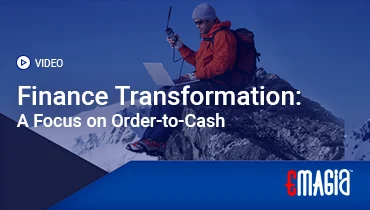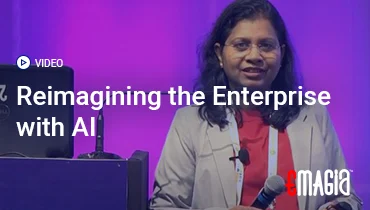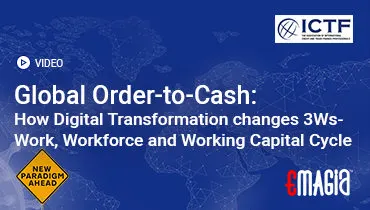Finance and Accounting Outsourcing (FAO) Services are transforming how companies manage their back-office operations. In this guide, we will explore what FAO services encompass, why organizations adopt outsourced accounting and finance BPO, how to choose models, critical success factors, and trends like cloud accounting and AI in accounting outsourcing.
Introduction: Why FAO Services Are Gaining Momentum
With increasing complexity in regulatory compliance, cost pressures, talent shortages, and digital transformation demands, many companies are turning to finance and accounting outsourcing (FAO) as a strategic lever. The right FAO services allow businesses to focus energy on core growth functions, while experts manage bookkeeping, accounts payable outsourcing, accounts receivable outsourcing, payroll outsourcing, tax compliance outsourcing, and financial reporting services.
What Are Finance and Accounting Outsourcing (FAO) Services?
FAO services refer to delegating finance and accounting tasks to external service providers or specialized teams. This includes everything from transactional bookkeeping outsourcing to higher-value finance analytics outsourcing, and compliance and regulatory outsourcing.
Definition and Scope
Finance and accounting outsourcing covers both transactional services (bookkeeping, payroll, AR/AP) and strategic functions (reporting, forecasting, financial analytics, advisory). It is a subset of finance BPO (Business Process Outsourcing).
Evolution & Market Drivers
Over time, firms have moved from simple outsourcing of payroll or bookkeeping to more integrated FAO models with shared services, remote accounting teams, and use of automation and AI. The driver is cost reduction outsourcing, scalability and flexibility outsourcing, and digital transformation finance. Gartner notes that F&A BPO providers often remotely connect to clients’ systems to carry out record-to-report, order-to-cash, and purchase-to-pay operations. :contentReference[oaicite:0]{index=0}
Outsourced Accounting: Core Elements
Outsourced accounting typically includes bookkeeping outsourcing, general ledger maintenance, bank reconciliation, fixed assets, intercompany accounting, month-end close, and financial reporting. Some providers also integrate cloud accounting solutions and remote teams.
Major FAO Service Lines
Bookkeeping Outsourcing
Bookkeeping is foundational. Outsourcing it means that data entry, transaction classification, journal entries, and reconciliation are handled externally. This frees internal teams and ensures consistency.
Accounts Payable Outsourcing
Accounts payable outsourcing means third parties manage supplier invoices, invoice validation, payments, vendor reconciliation, and compliance checks. This ensures faster cycle time and fewer errors.
Accounts Receivable Outsourcing
Here, FAO providers handle invoicing, receipts, collections, credit management, and AR aging. Clients benefit from improved cash collections and reduced DSO (days sales outstanding).
Payroll Outsourcing
Payroll outsourcing covers salary calculation, tax withholding, benefits deductions, payslip delivery, and statutory compliance. This is a high-risk, high-value area in outsourcing.
Tax Compliance Outsourcing
Tax compliance outsourcing includes preparation and filing of corporate taxes, indirect tax (VAT, GST), withholding tax, and liaison with tax authorities. Using external expertise reduces risk.
Financial Reporting & Management Reporting Services
FAO providers often produce monthly, quarterly, and annual financial statements, variance analysis, dashboards, KPIs, and management reports. When combined with analytics, this becomes finance analytics outsourcing.
Other Value-Added Services: Forecasting, FP&A, Advisory
Some advanced FAO engagements include forecasting, budgeting, scenario planning, and advisory services. These lie at the crossroads of outsourcing and strategic finance.
Benefits of Finance and Accounting Outsourcing
Cost Savings & Operational Efficiency
One of the top advantages is cost reduction outsourcing: lower labor costs, avoidance of hiring/training overheads, and economies of scale. Many businesses report 30-60 % savings in transaction costs. :contentReference[oaicite:1]{index=1}
Access to Expertise & Specialization
FAO gives you access to skilled professionals with deep domain knowledge in accounting, tax, regulatory compliance, and finance analytics. This level of specialization is hard to maintain in-house. :contentReference[oaicite:2]{index=2}
Scalability and Flexibility
As your business grows or fluctuates, outsourced services scale with you. You don’t have to hire or lay off internal staff—all under the umbrella of scalability and flexibility outsourcing.
Focus on Core Business & Strategic Priorities
Outsourcing frees internal teams from mundane accounting tasks so they can focus on growth, innovation, customer engagement, or product development.
Improved Process & Technology Adoption
FAO providers invest in cloud accounting solutions, automation in finance outsourcing, AI in accounting outsourcing, and process optimization. Clients benefit from modern tools without large capital outlay.
Risk Mitigation, Compliance & Controls
External providers often maintain quality controls, audit trails, compliance frameworks, and best practices in regulatory outsourcing and data security FAO. This lowers internal risk burden.
Challenges, Risks & Mitigation Strategies
Data Security & Confidentiality Concerns
Handling financial data externally raises security and privacy risks. Strong protocols, encryption, NDAs, and compliance certifications mitigate these.
Loss of Control & Oversight
Some stakeholders fear losing control over financial operations. Clear SLAs, governance frameworks, and transparency help maintain oversight.
Transition & Change Resistance
Migrating from in-house to outsourced functions often triggers resistance. Effective change management, training, and stakeholder engagement are key.
Integration with Legacy Systems and Process Misalignment
Aligning external teams with your ERP, systems, and processes is complex. Strong process mapping, middleware, and phased integration reduce disruption.
Hidden Costs & Vendor Dependency
If not carefully scoped, outsourcing deals may include hidden charges. Also, overdependence on a single vendor is risky. Use cost transparency and multi-vendor strategies.
FAO Engagement Models & Delivery Approaches
Full-Service Outsourcing
This model outsources end-to-end finance and accounting operations. The provider manages everything from bookkeeping to reporting and advisory.
Selective / Process-Specific Outsourcing
You outsource only specific areas—such as accounts payable outsourcing or tax compliance outsourcing—while keeping critical functions in house.
Nearshore, Offshore & Onshore Models
Delivery can be located locally (onshore), in neighboring countries (nearshore), or in distant geographies (offshore). Each has tradeoffs in cost, communication, and risk.
Hybrid & Captive Models
Some firms use hybrid models: internal team + external FAO partner, or captive centers that operate as outsourcing arms within the company.
Managed Services & Shared Services Integration
Some FAO engagements integrate with shared services centers, or operate under managed services frameworks with centralized oversight.
How to Choose a FAO Partner: Criteria & Due Diligence
Domain Expertise & Industry Fit
The ideal partner must understand your industry’s regulatory, reporting, and compliance requirements.
Technology & Automation Capability
Check their competence in cloud accounting solutions, AI, process automation, data analytics, and integration.
Data Security & Compliance Standards
Ensure they have security certifications, privacy policies, audit readiness, and compliance with global data protection laws.
Service Levels, Governance & SLAs
Define clear service levels (turnaround, accuracy, uptime) and governance mechanisms.
Scalability, Flexibility & Pricing Model
The partner should flex with your growth. Pricing models can be fixed, usage based, or outcome oriented.
Client References, Track Record & Reputation
Check case studies, client feedback, and reputation in FAO market (e.g. top providers lists). :contentReference[oaicite:3]{index=3}
Implementation Roadmap & Best Practices
Assessment & Readiness Check
Begin with a detailed as-is assessment: current systems, processes, volumes, cost, risks, and stakeholder needs.
Define Scope, Objectives & Stakeholder Alignment
Set clear goals, scope boundaries, risks, and get buy-in from finance, IT, business units, and leadership.
Process Mapping, Standardization & Optimization
Map existing workflows, reduce variation, simplify rules, and standardize across business units.
Technology Selection & Integration
Choose the appropriate cloud accounting solutions, workflow tools, integration middleware, automation engines.
Pilot & Phased Rollout
Start with low-risk processes (e.g. accounts payable outsourcing) as pilot. Validate outcomes before scaling.
Change Management & Training
Prepare the team, manage resistance, communicate clearly, offer training and support.
Governance, Monitoring & Continuous Improvement
Establish oversight committees, dashboards, metrics, audits, and feedback loops for ongoing optimization.
Technology & Trends Shaping FAO
Cloud Accounting Solutions & SaaS Platforms
Modern FAO providers use cloud platforms that enable real-time data access, collaboration, scalability, and remote accounting teams.
Robotic Process Automation (RPA) & Workflow Automation
RPA automates repetitive tasks like invoice matching, data entry, and reconciliation, enhancing speed and reducing error.
AI, Machine Learning & Cognitive Automation
AI in accounting outsourcing helps predict anomalies, classify transactions, detect fraud, and drive decision intelligence.
Analytics, Dashboards & Finance Insights
Data analytics and visualization tools provide real-time KPIs, trend analysis, and predictive insights across outsourced processes.
Blockchain, Smart Contracts & Emerging Tech
Emerging technologies like blockchain and smart contracts may eventually play a role in FAO for audit trails, intercompany reconciliation, and security.
Case Studies & Examples of FAO in Action
Large Enterprise FAO Transformation
(Insert a real or anonymized example: how a global company moved to full FAO, achieved cost savings, improved reporting, etc.)
Mid-Size Business Outsourcing Accounting Tasks
(Insert example of mid-size company outsourcing bookkeeping & payroll, benefits realized)
Industry-Specific FAO (Healthcare, Manufacturing, Retail, etc.)
(Showcase how FAO services adapt to sector needs, compliance, cost structure)
Lessons Learned and Best Practices from Providers
(Summarize learnings, pitfalls, success factors from real FAO engagements)
How Emagia Empowers FAO & Shared Finance Transformation
Emagia offers a powerful platform to elevate FAO services through AI-enabled automation, exception handling, and finance operations insight. It enables seamless integration with ERP systems, real-time dashboards, anomaly detection, and cognitive process oversight.
With Emagia, outsourced accounting teams can operate more efficiently, maintain quality controls, and scale operations with confidence. Emagia helps in order-to-cash, procure-to-pay, record-to-report, and other FAO service lines, bridging gaps between technology, process, and governance.
Emagia’s insights layer allows both clients and service providers to monitor performance metrics, detect bottlenecks, and continuously improve the FAO ecosystem.
Future of Finance & Accounting Outsourcing
Evolution Toward Intelligent FAO
The future FAO services will adopt more autonomous accounting, self-learning RPA, predictive analytics, and finance as a service (FaaS) models.
Hybrid Models & Shared Finance Platforms
Hybrid models combining in-house teams, outsourced partners, and shared services will become more common.
Focus on Value Creation, Not Just Cost Savings
FAO will shift from cost center to value driver through insights, advisory, and proactive finance analytics outsourcing.
Sustainability, ESG & Ethical Finance Outsourcing
Outsourcing providers will need to align with ESG goals, sustainability reporting standards, and responsible data practices.
Conclusion & Key Takeaways
Finance and Accounting Outsourcing (FAO) Services are not merely cost-saving tools but transformational engines. When structured well—with the right partner, governance, technology, and change management—outsourced accounting can deliver scalability, expertise, control, and growth support.
As you evaluate FAO models, be methodical: start with readiness assessment, choose the right provider, pilot carefully, and foster continuous improvement. The future of outsourced finance lies in intelligent automation and insight-driven operations.
Frequently Asked Questions (FAQs)
What is finance & accounting outsourcing?
It is the practice of delegating finance and accounting tasks (bookkeeping, payroll, reporting, tax) to external specialized providers.
Is outsourcing accounting risky?
Risks exist (data security, control loss, hidden costs), but with proper governance, SLAs, and vendor due diligence, they can be managed.
What services can you outsource under FAO?
Bookkeeping, accounts payable, accounts receivable, payroll, tax compliance, financial reporting, analytics, and advisory functions.
How does FAO pricing work?
Pricing models vary: fixed fee, per-transaction basis, outcome-based, or hybrid. It should align with scope and growth plans.
When should a company consider FAO?
When finance operations become complex, costly, error-prone, or distract from strategic business focus.



